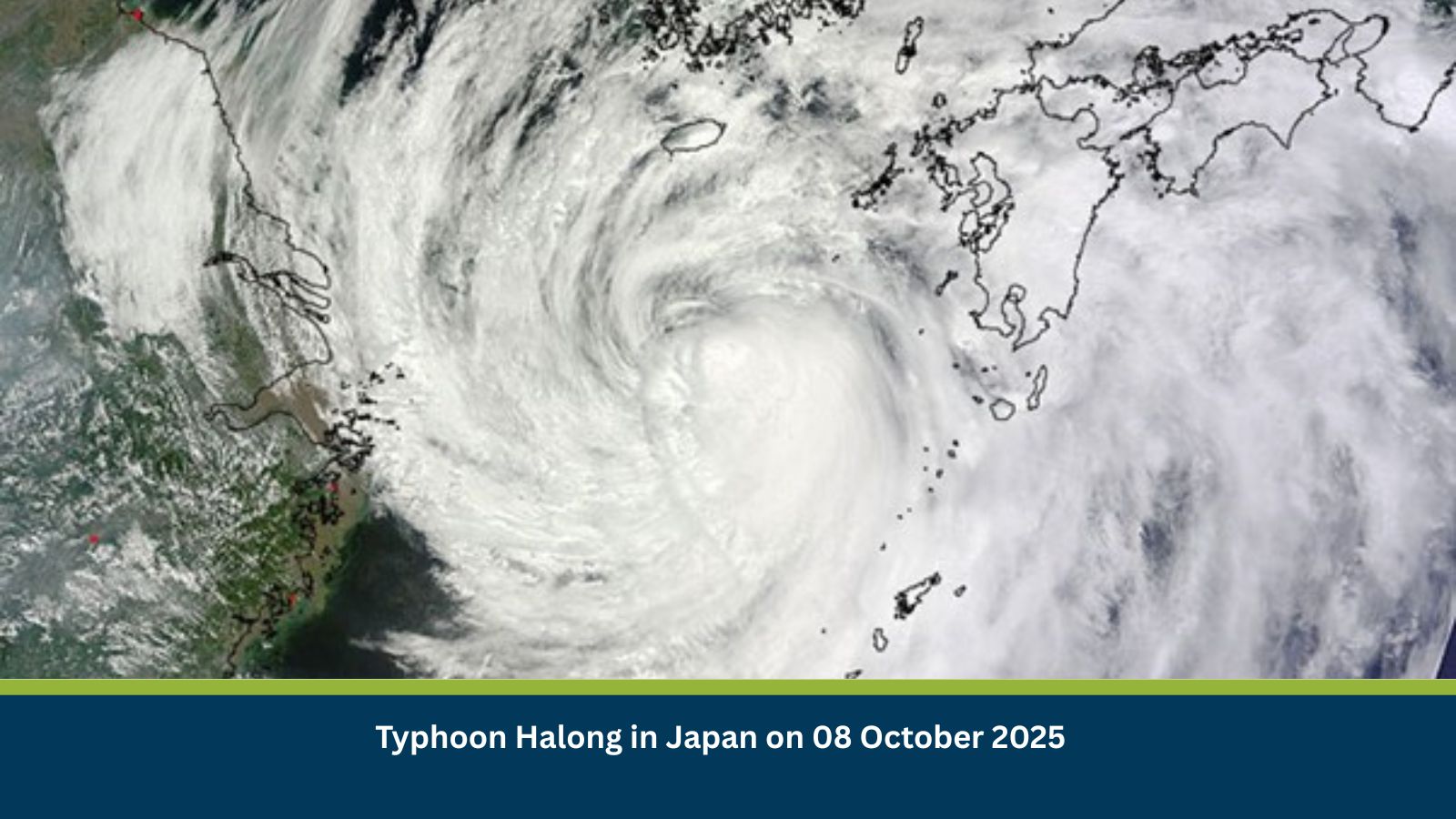What is Risk Analysis in the Context of Natural Disaster Events
Natural disaster risk analysis focuses on evaluating the operational, infrastructural, and humanitarian consequences of severe weather events. In Japan, typhoons are recurring high-impact risks due to the country’s geographic position along the Pacific storm belt. The Japan Meteorological Agency (JMA) regularly issues detailed advisories that guide national preparedness. Typhoon Halong fits within Japan’s established pattern of powerful tropical systems such as Typhoon Hagibis (2019) and Lan (2023), which caused significant transport suspensions, infrastructure damage, and prolonged power outages. This event exemplifies the importance of early warning systems, crisis coordination, and resilience planning for corporate and public safety.
Executive Summary
- Date of Incident: 08 October 2025
- Location: Tokyo, Japan
- Risk Category: Natural Disaster
- Severity Score: 4/5
- Confidence Level: 85%
Typhoon Halong is currently affecting Japan, bringing sustained heavy rainfall, storm surges, and strong winds across the central and western regions, including Tokyo, Shizuoka, and the Izu Islands. The event is expected to last 48–72 hours with additional residual disruption for up to a week. Historical comparisons suggest a moderate-to-high impact scenario involving extensive transport suspension, infrastructure strain, and potential casualties.
Current Updates and Sensitive Areas
As of 08 October, the JMA has issued typhoon advisories covering the Izu Islands, Shizuoka Prefecture, and the Tokyo Bay coastline. High-risk zones include Miyakejima, Hachijojima, Miura Peninsula, and low-lying areas of Yokohama, Kawasaki, and Shimizu City. Coastal infrastructure, agricultural lands, and densely populated industrial hubs face exposure to storm surges and flash floods. Past typhoons indicate a recurring pattern of rapid infrastructure disruption and delayed recovery in these areas.
Impact on Transportation and Services
Severe travel disruptions are anticipated across Japan’s transport network. Tokyo Narita, Haneda, and Chubu Centrair airports are expected to experience widespread flight cancellations and delays. The Tokaido and Sanyo Shinkansen lines will likely impose speed restrictions or temporary suspension. Key highways, including National Route 135 and Tomei Expressway, may close due to flooding or debris. Port operations in Tokyo, Yokohama, and Shimizu are expected to halt temporarily, impacting both commercial and passenger logistics.
Recommended Actions
- Activate Emergency Protocols: Ensure personnel safety confirmation, implement shelter-in-place measures, and secure external infrastructure.
- Secure Supply Chains: Engage logistics partners to reroute shipments, safeguard warehouses, and prepare for prolonged delays.
- Establish Crisis Communication Channels: Coordinate consistent internal and external updates through HR, Security, and Corporate Communications.
- Protect IT and Data Assets: Back up systems to off-site or cloud locations; validate redundancy of critical communications infrastructure.
Multidimensional Impact and Collateral Effects
Typhoon Halong is projected to trigger widespread power outages, telecommunication disruptions, and transport paralysis, particularly in coastal prefectures. Collateral risks include cascading failures in logistics and energy systems, exacerbating the impact of concurrent warnings for high waves, swells, and storm surges across Tokyo Bay and Sagami Bay. The compounded risk to emergency responders and industrial assets remains high. Prolonged outages could also intensify humanitarian concerns, especially in remote island communities where access is limited.
Emergency Contacts
- Police: 110
- Fire & Ambulance: 119
- Japan Meteorological Agency (JMA): www.jma.go.jp
- Cabinet Office – Disaster Management: www.bousai.go.jp
- Tokyo Metropolitan Government Disaster Prevention Portal: www.bousai.metro.tokyo.lg.jp
Final Thoughts
Typhoon Halong is expected to bring moderate to severe disruptions across Japan throughout the week, with key risks including instability in power grids, flooding of coastal infrastructure, and prolonged suspension of transport services. Businesses should prioritize robust crisis communication, ensure remote work continuity, and maintain close monitoring of employee safety to minimize operational impact. The event underscores the importance of strengthening early-warning systems and updating continuity playbooks.
Stay ahead of operational risks with real-time alerts, scenario modeling, and expert advisories with datasurfr’s Predict. Start your 14-day free trial of Datasurfr’s Risk Intelligence Platform today.






